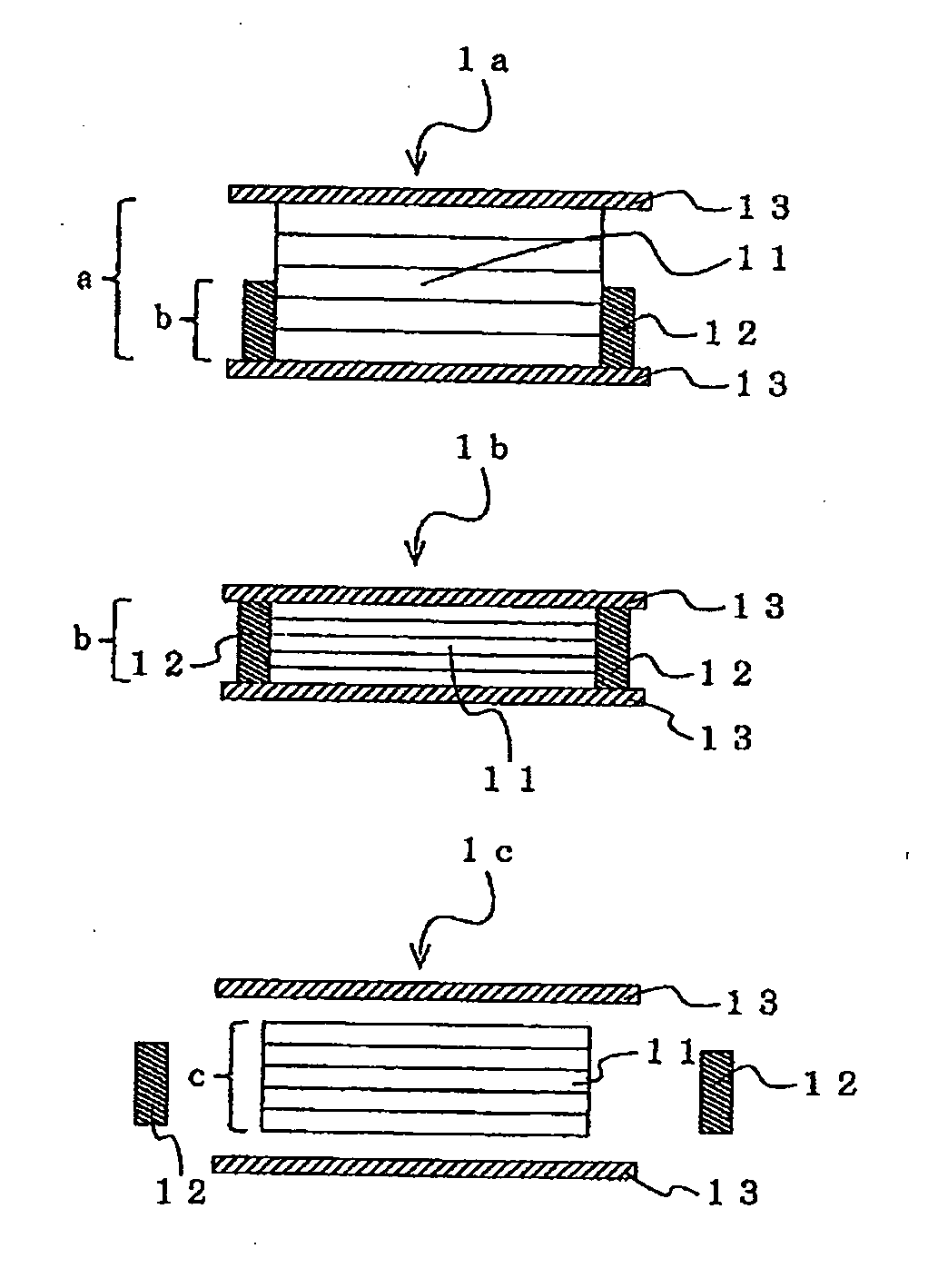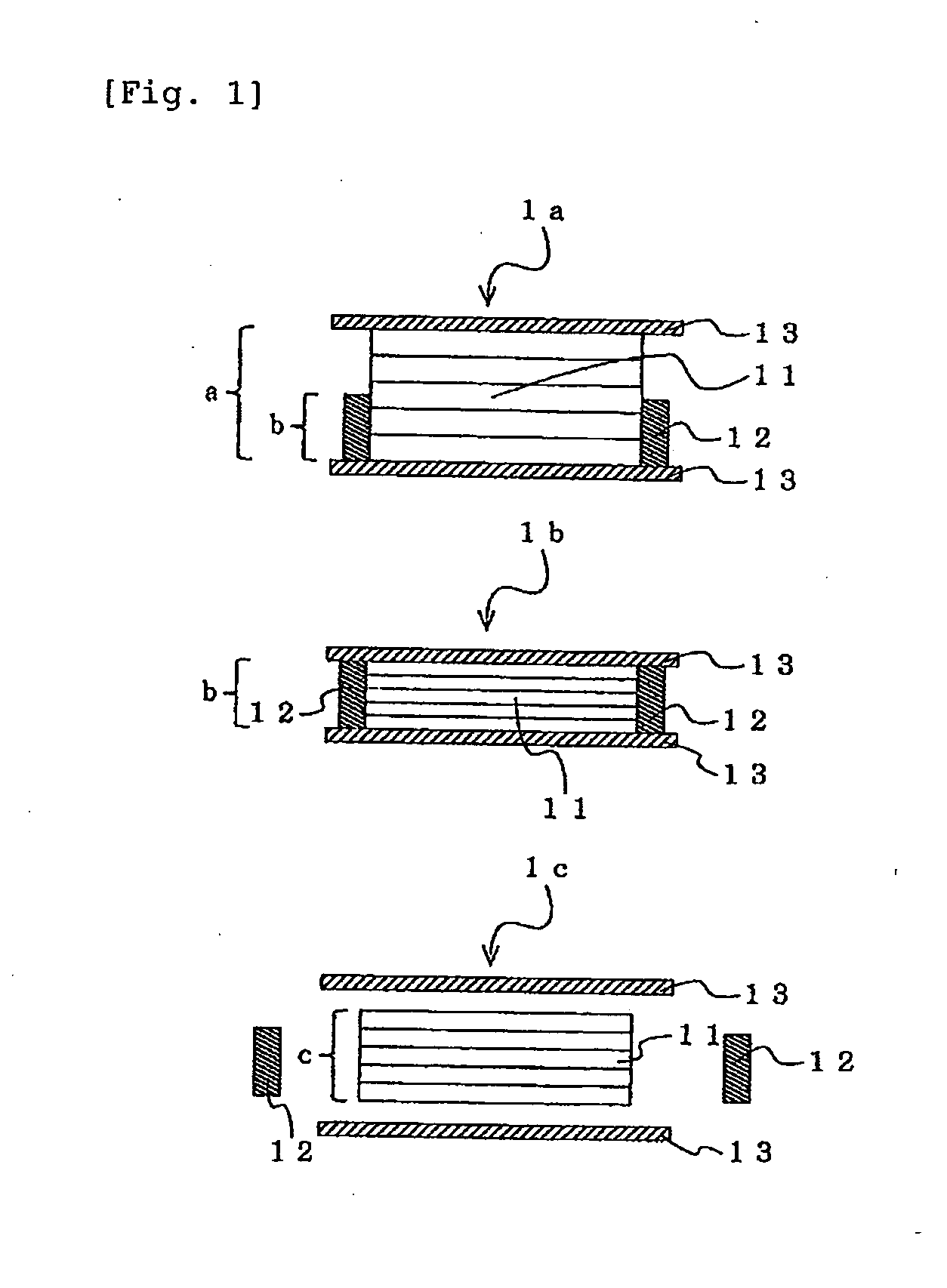Thermoplastic resin foam and process for producing the same
a technology of thermoplastic resin and foam, applied in the direction of synthetic resin layered products, chemistry apparatus and processes, transportation and packaging, etc., can solve the problems of poor strength, insufficient flexibility and cushioning properties, low expansion ratio of foam, etc., to achieve the effect of improving flexibility, strength, cushioning properties, and strain recovery
- Summary
- Abstract
- Description
- Claims
- Application Information
AI Technical Summary
Benefits of technology
Problems solved by technology
Method used
Image
Examples
example 1
[0088]A resin composition was prepared by kneading 100 parts by weight of a thermoplastic urethane elastomer having a JIS-A hardness of 60 degrees and using an adipate-type polyol (trade name “Miractran E660 MZAA” supplied by Nippon Polyurethane Industry Co., Ltd., SP: 20.9 [(J / cm3)1 / 2]) at a temperature of 180° C. in a kneading machine equipped with blades of roller type (trade name “LABO PLASTOMILL” supplied by Toyo Seiki Seisaku-Sho, Ltd.); and further kneading the kneadate with 6 parts by weight of a multifunctional urethane acrylate (trade name “UV 1700B” supplied by Nippon Synthetic Chemical Industry Co., Ltd., SP: 21.3 [(J / cm3)1 / 2]) and 0.225 part by weight of 2-methyl-1[4-(methylthio)phenyl]-2-morpholinopropan-1-one (trade name “Irgacure 907” supplied by Ciba Specialty Chemicals Corporation) as a photoinitiator at a temperature of 120° C.
[0089]The resin composition was molded using a hot-plate press heated to 120° C. and thereby yielded an unfoamed resin molded article as a ...
example 2
[0092]A foam (2.5 mm thick) was prepared by the procedure of Example 1, except for using the multifunctional urethane acrylate (trade name “UV 1700B” supplied by Nippon Synthetic Chemical Industry Co., Ltd.) in an amount of 20 parts by weight and the photoinitiator (trade name “Irgacure 907” supplied by Ciba Specialty Chemicals Corporation) in an amount of 0.75 part by weight.
example 3
[0093]A foam (2.8 mm thick) was prepared by the procedure of Example 1, except for using the multifunctional urethane acrylate (trade name “UV 1700B” supplied by Nippon Synthetic Chemical Industry Co., Ltd.) in an amount of 40 parts by weight and the photoinitiator (trade name “Irgacure 907” supplied by Ciba Specialty Chemicals Corporation) in an amount of 1.5 parts by weight.
PUM
| Property | Measurement | Unit |
|---|---|---|
| temperature | aaaaa | aaaaa |
| tensile strain | aaaaa | aaaaa |
| tensile strain | aaaaa | aaaaa |
Abstract
Description
Claims
Application Information
 Login to View More
Login to View More - R&D
- Intellectual Property
- Life Sciences
- Materials
- Tech Scout
- Unparalleled Data Quality
- Higher Quality Content
- 60% Fewer Hallucinations
Browse by: Latest US Patents, China's latest patents, Technical Efficacy Thesaurus, Application Domain, Technology Topic, Popular Technical Reports.
© 2025 PatSnap. All rights reserved.Legal|Privacy policy|Modern Slavery Act Transparency Statement|Sitemap|About US| Contact US: help@patsnap.com


